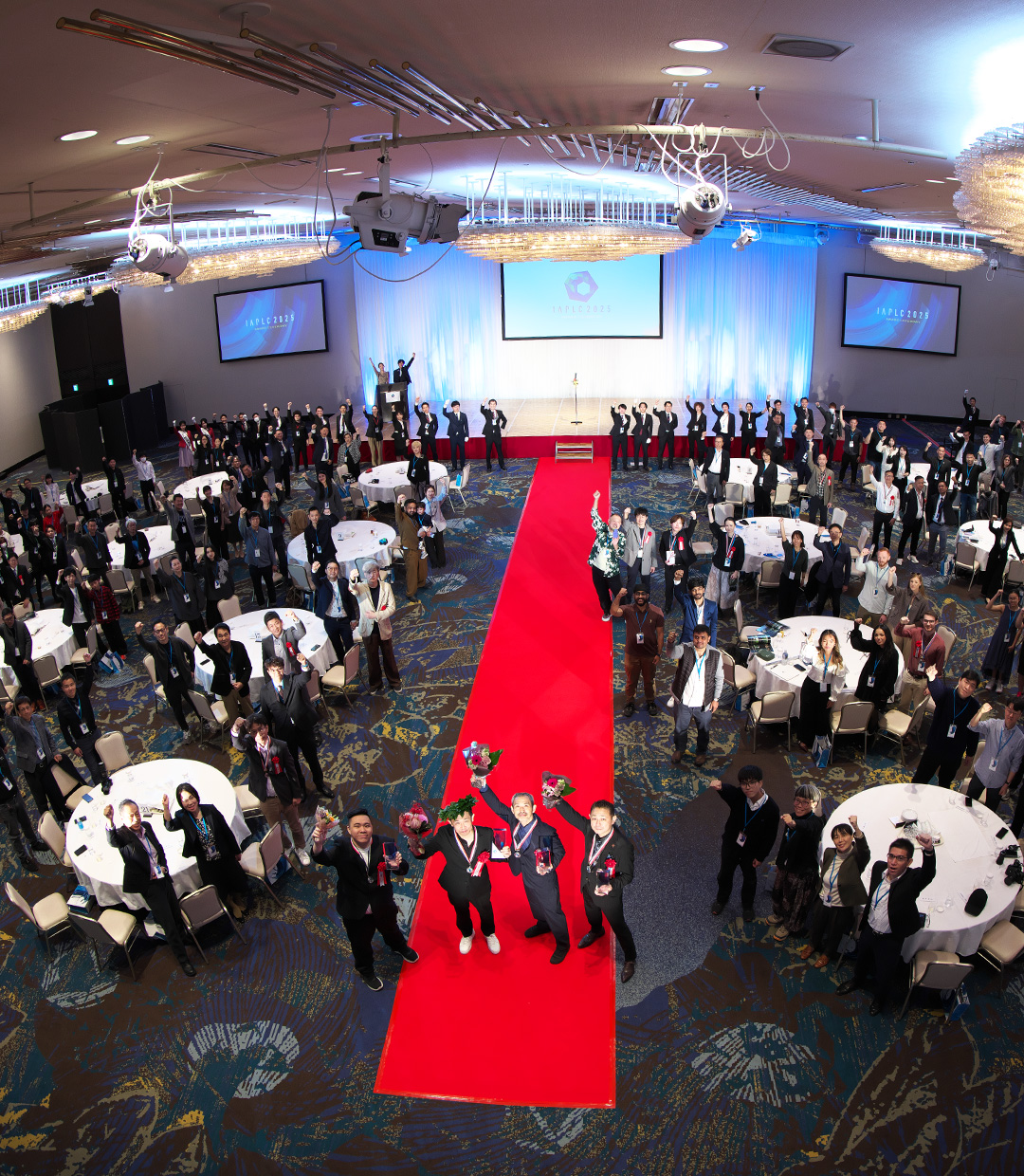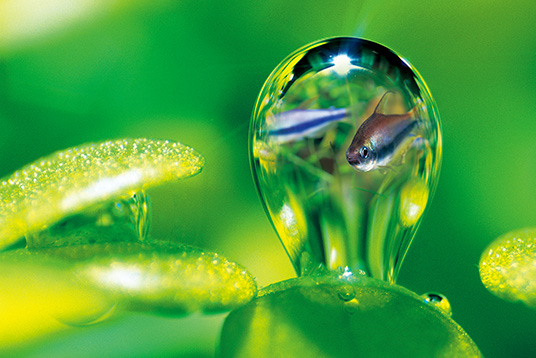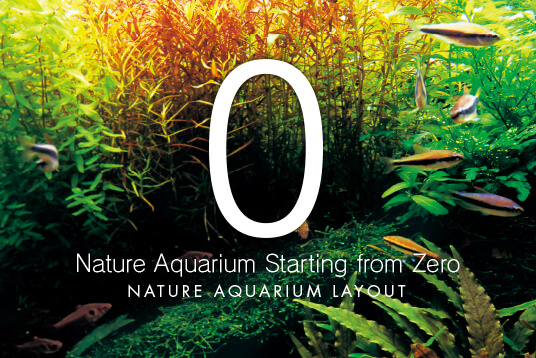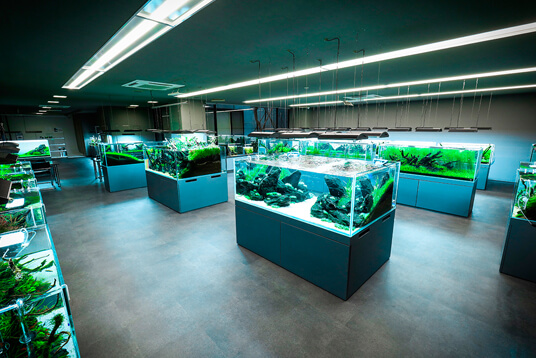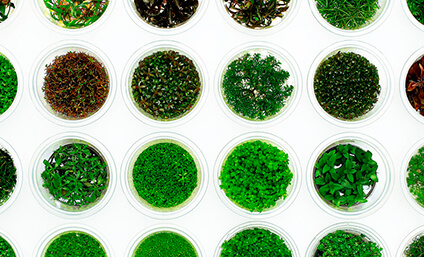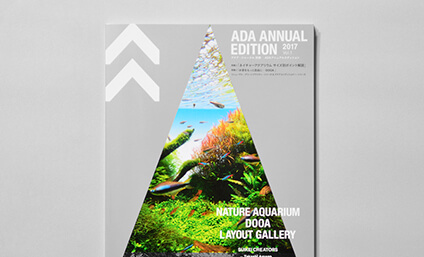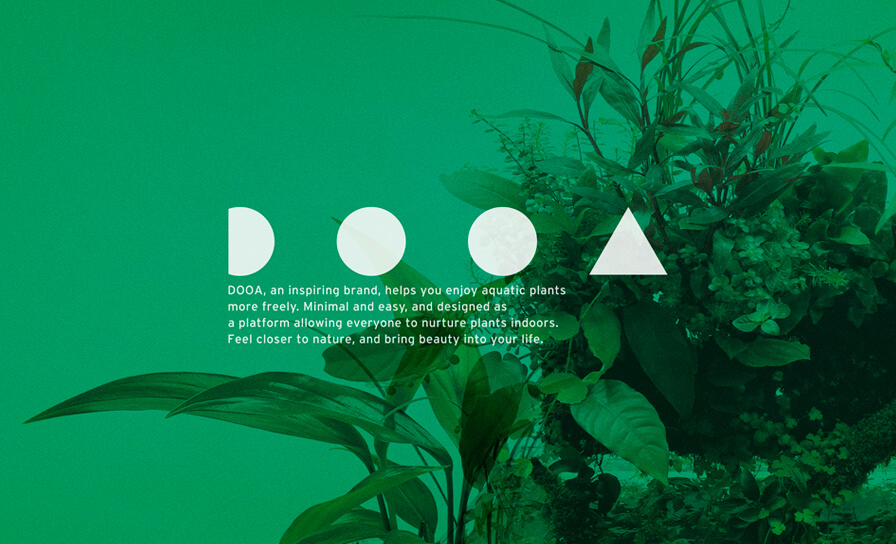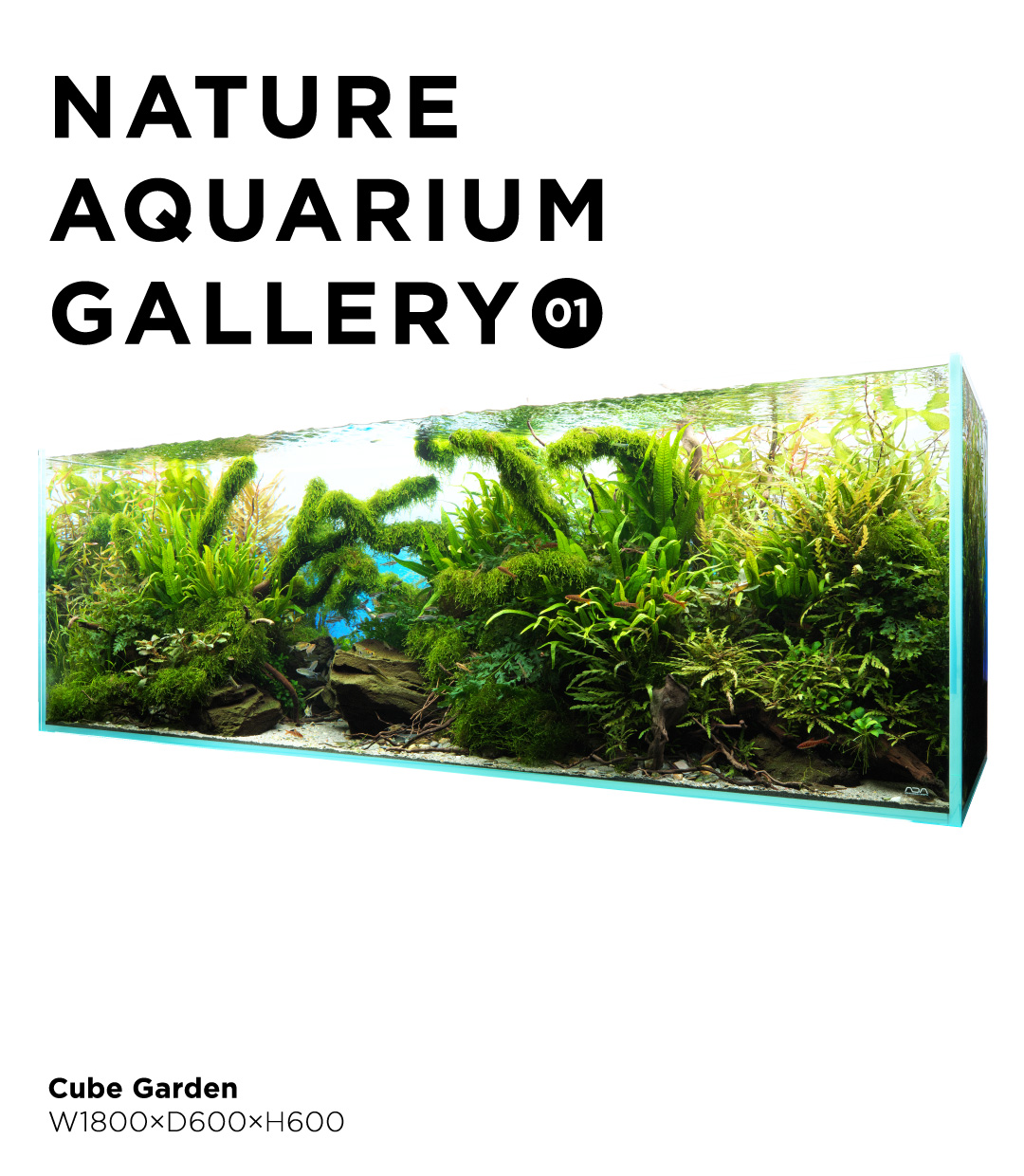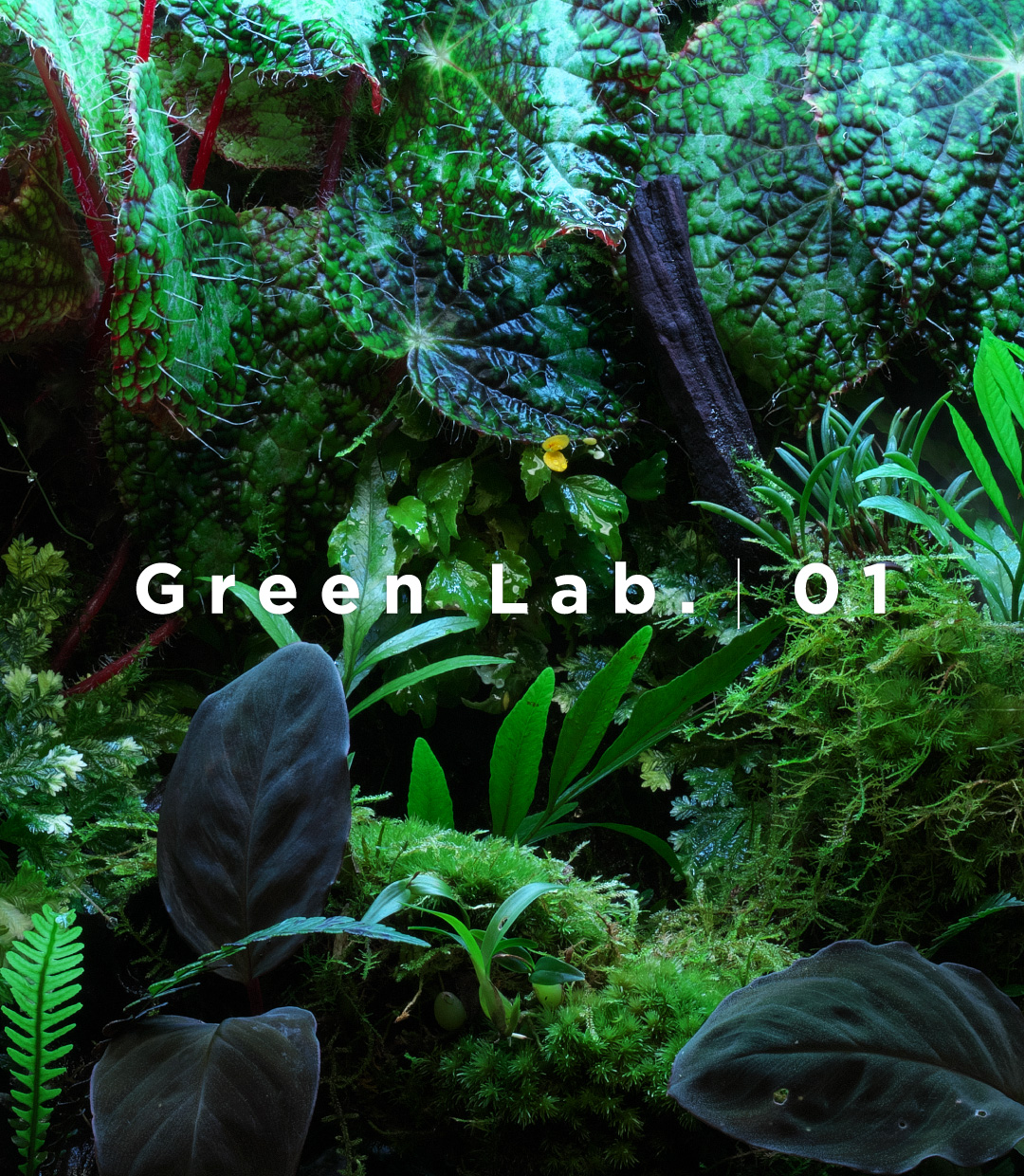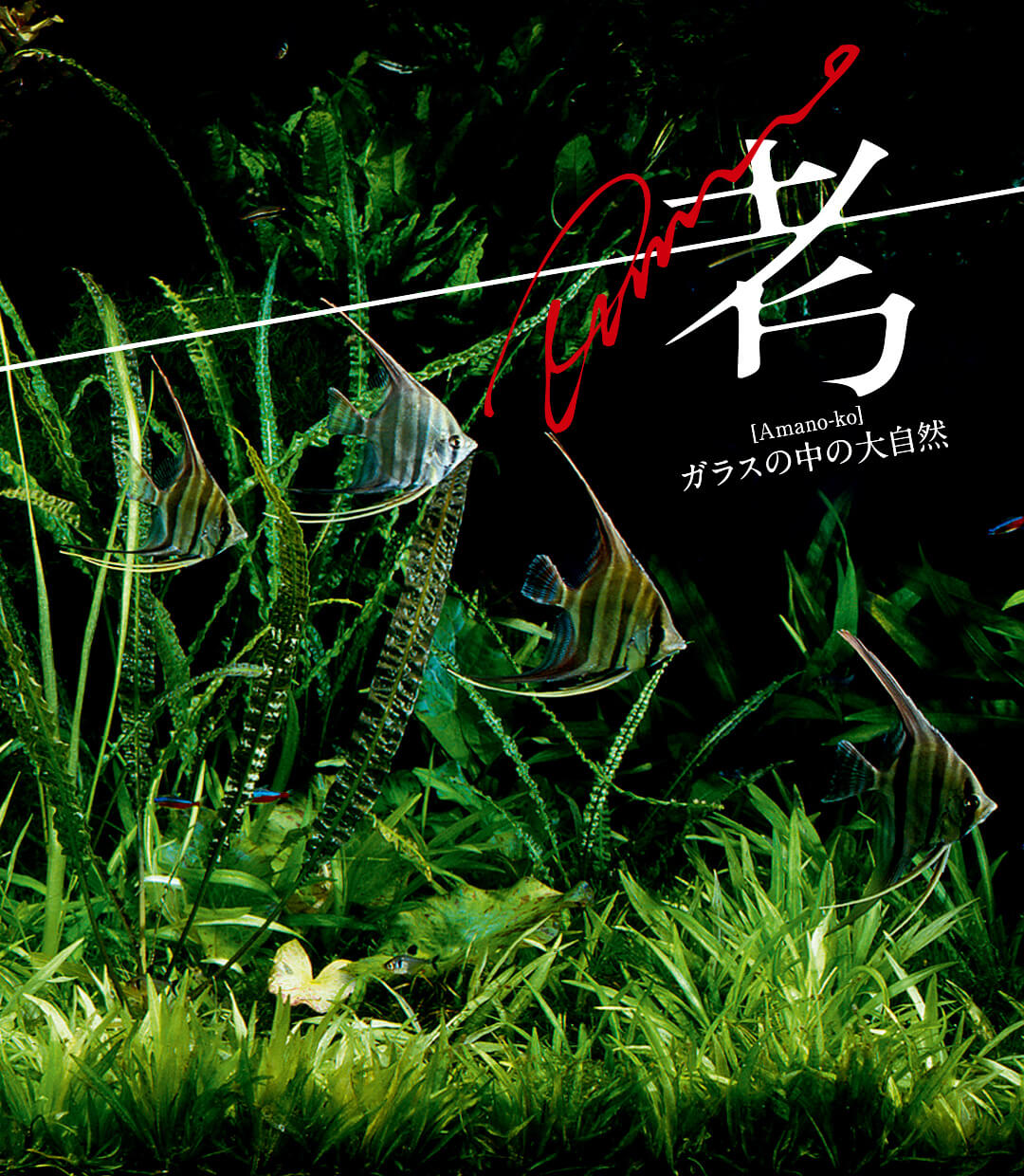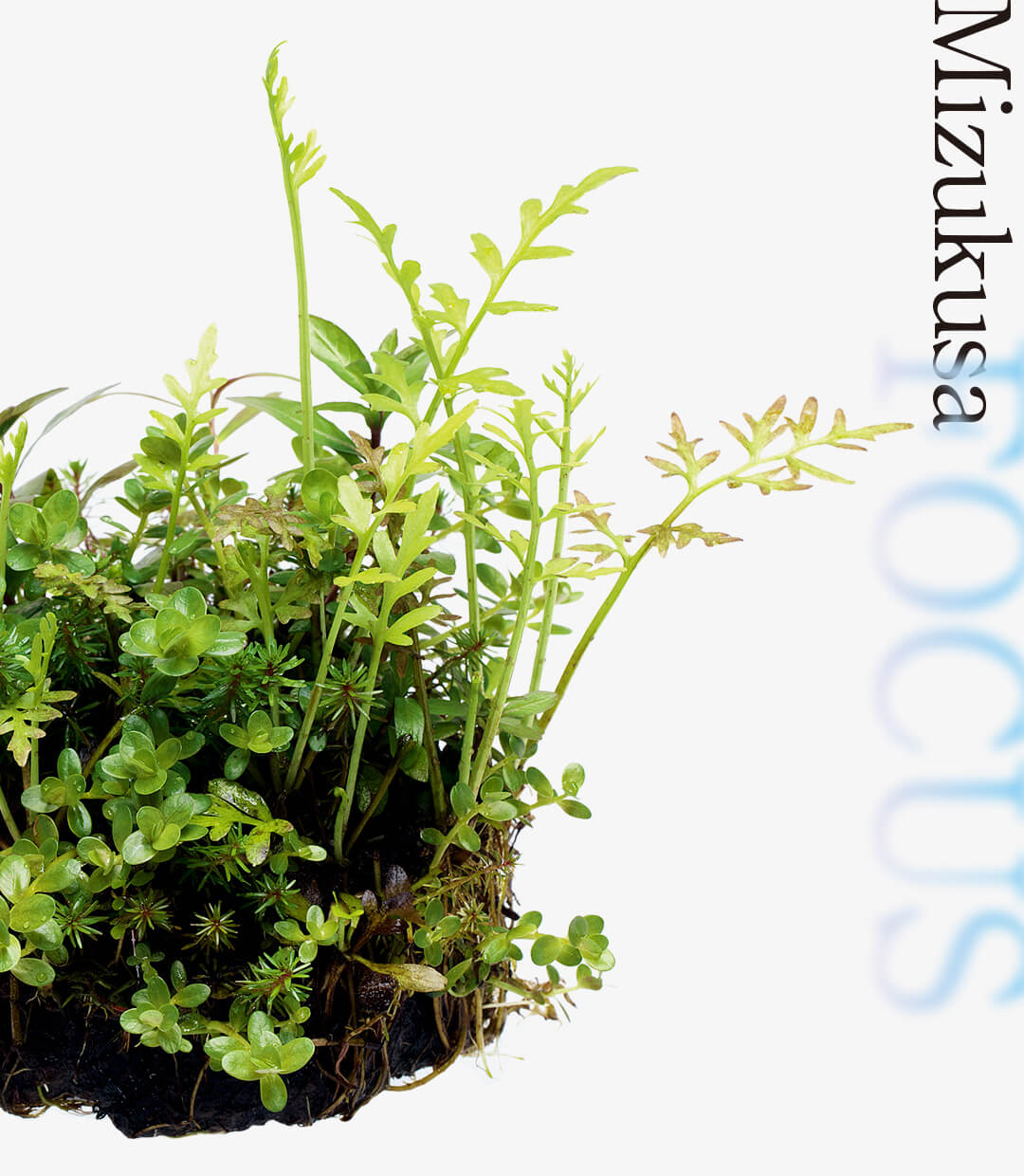NATURE AQUARIUM GALLERY #01: Diverse Forest
At the Nature Aquarium Gallery, aquascapes are created and maintained every day. Through this ongoing work, ADA has developed a deep and practical knowledge of Nature Aquarium. In the web series NATURE AQUARIUM GALLERY, we interview ADA SUIKEI Creators and ADA’s expert maintenance staff to explore their creations and share tips on how to care for and grow aquatic environments using ADA products.
A Wild Aquascape Inspired by the Forests of South Africa
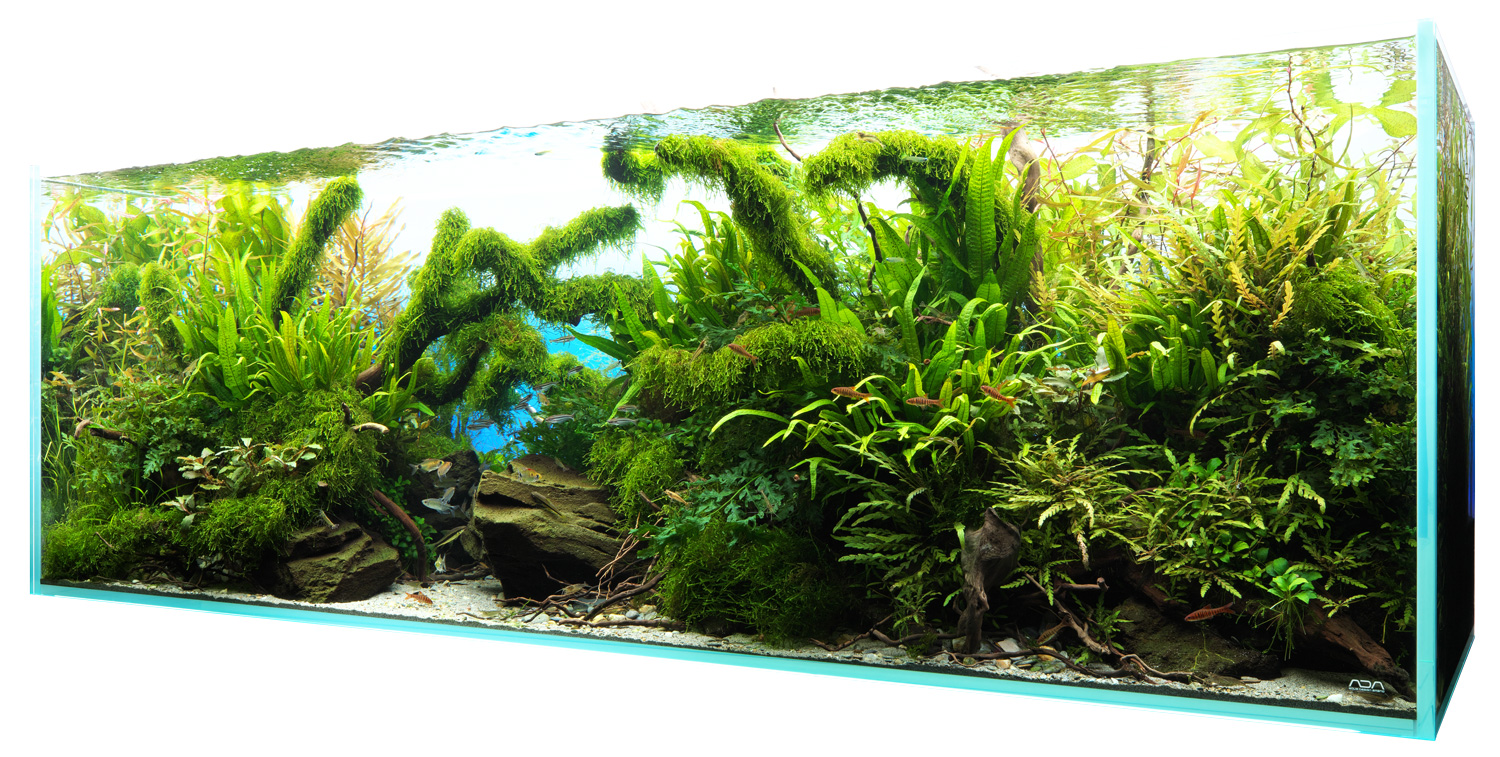
[Diverse Forest]
The idea behind this aquascape came from the cloud forests of the Drakensberg Mountains in South Africa. The intricate shapes of the trees and the thick carpet of moss growing among them left a lasting impression on me. A moment in nature which became the seed for this layout. What struck me most was the way so many different plants coexisted and created such a beautifully balanced environment. I was inspired to recreate that sense of natural harmony in a tank, interpreting it through my own aquascaping style. (– ADA SUIKEI Creator Daichi Araki)
Cloud forest in the Drakensberg Mountains (Photo: Daichi Araki)
The idea behind this aquascape came from the cloud forests of the Drakensberg Mountains in South Africa. The intricate shapes of the trees and the thick carpet of moss growing among them left a lasting impression on me. A moment in nature which became the seed for this layout. What struck me most was the way so many different plants coexisted and created such a beautifully balanced environment. I was inspired to recreate that sense of natural harmony in a tank, interpreting it through my own aquascaping style. (– ADA SUIKEI Creator Daichi Araki)
Cloud forest in the Drakensberg Mountains (Photo: Daichi Araki)
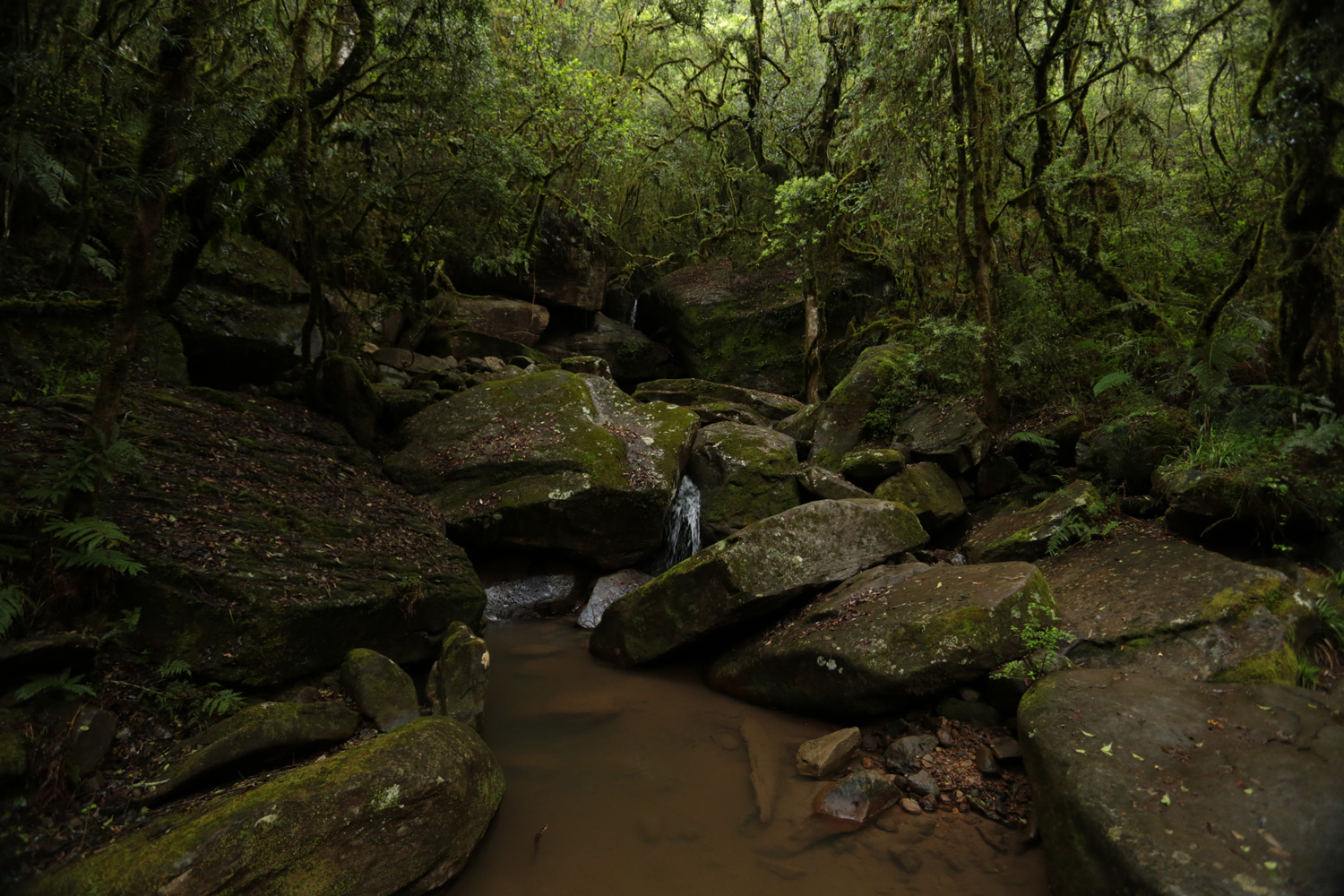
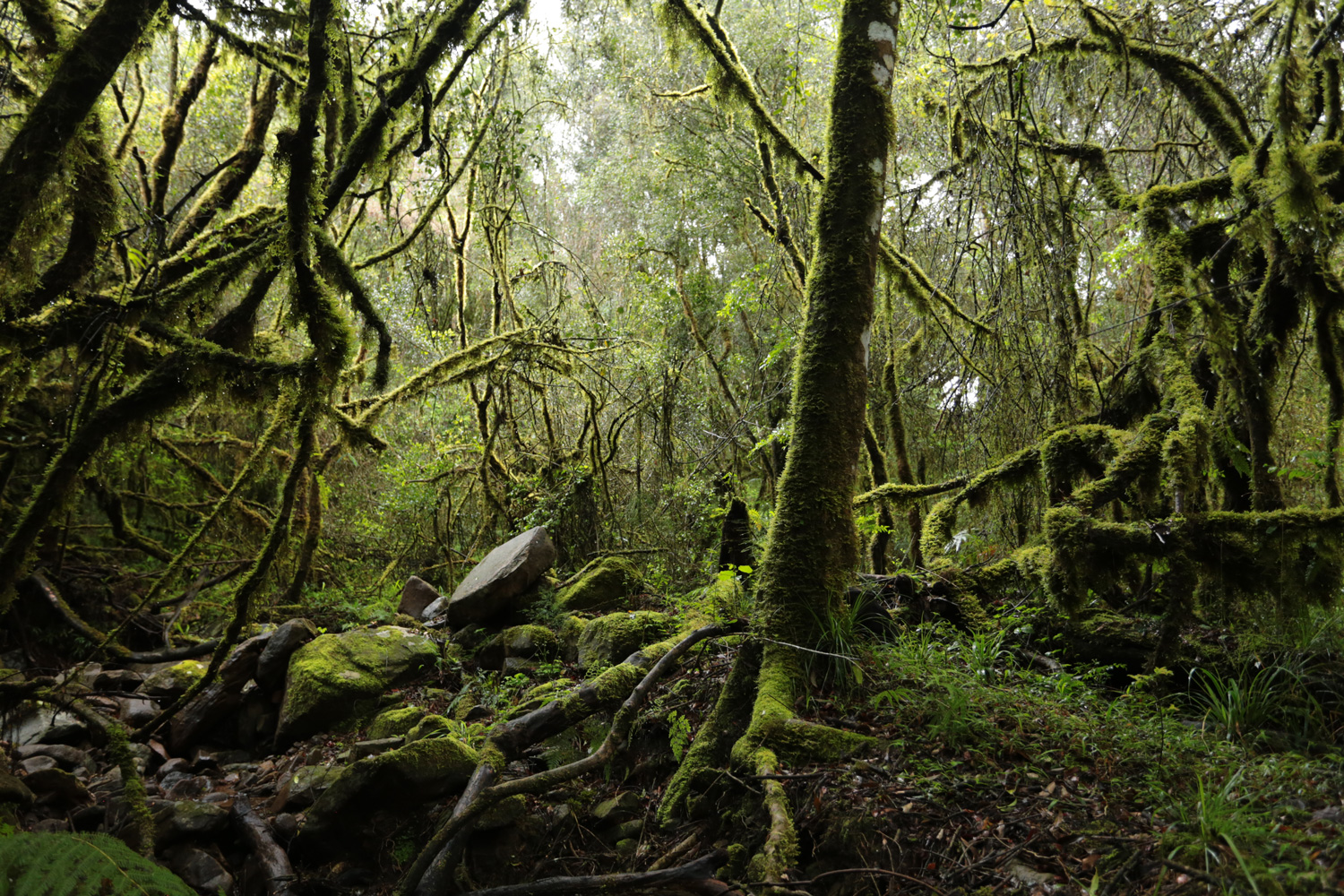
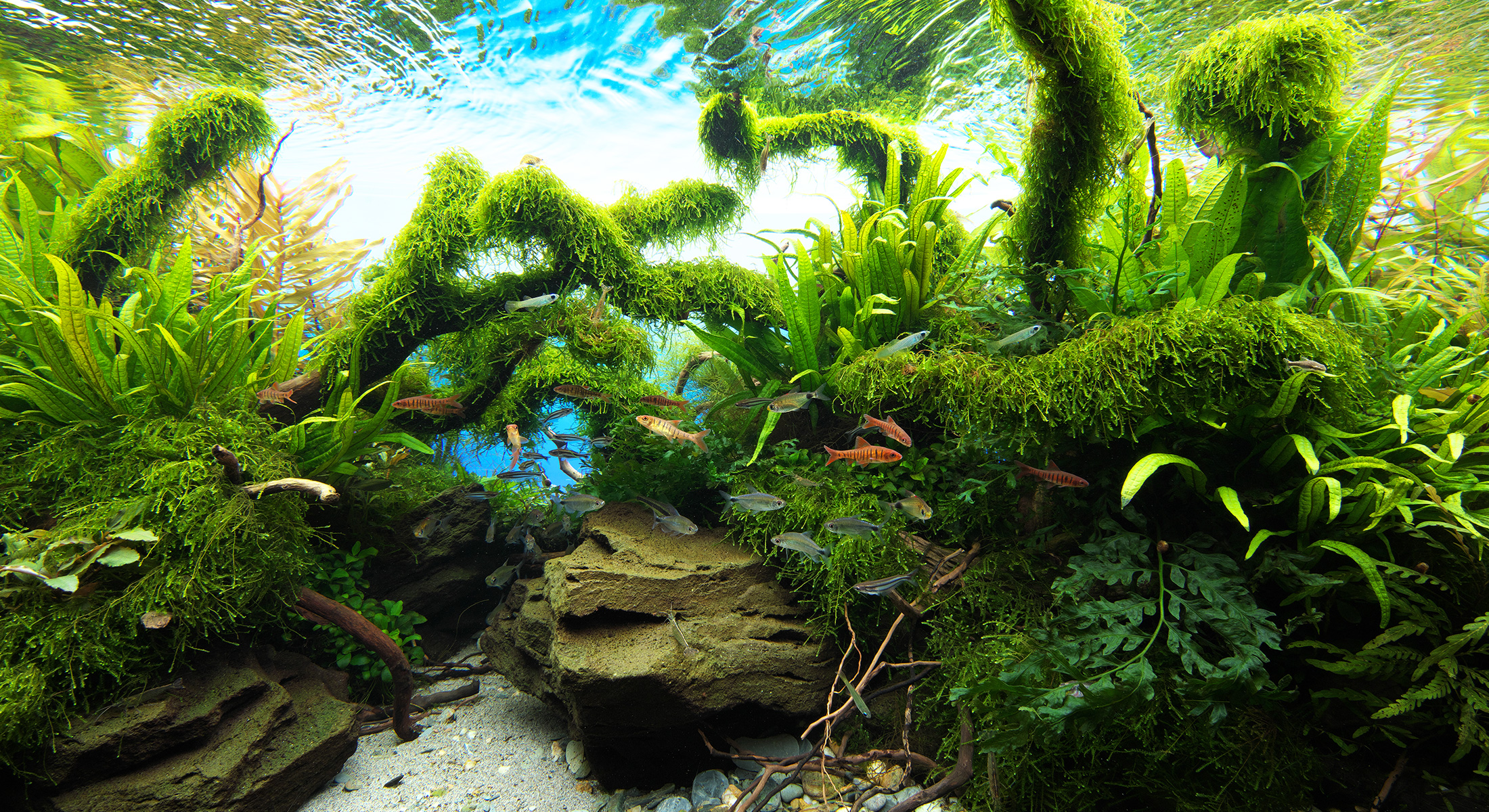
DATA
Creation date: June 26, 2024
Photo taken on: March 14, 2025
Creator: Daichi Araki(ADA SUIKEI CREATOR)
Aquarium: Cube Garden W1,800×D600×H600(mm)
Lighting: Solar RGB x 3 (8.5 hours per day)
Filtration: Super Jet Filter ES-2400 (Bio Rio G)
Material: Branch Wood, Sansui Stone, Unzan Stone
Substrate: Brook Sand(KUMU SA-07), Flat River Gravel S(KUMU GR-01),Flat River Gravel(KUMU GR-02)Aqua Soil – Amazonia Ver.2, Power Sand Advance L, Bacter 100, Clear Super, Tourmaline BC
CO2: Pollen Glass Beetle 50Ø, 5 bubbles per second via CO2 Beetle Counter (using Tower)
Aeration: 15.5 hours after the light is turned off using Lily Pipe P-6
Additives: Brighty K, Green Brighty Mineral, Green Brighty Iron, Green Brighty Nitrogen
Water change: 1/3 once a week
Water quality: Temperature 25°C, pH: 6.2, TH: 50 mg/L
Plants
Ottelia ulvifolia
Aponogeton crispus
Helanthium bolivianum ‘Angustifolius’
Eleocharis vivipara
Cryptocoryne sivadasanii
Cryptocoryne wendtii ‘Green’
Cryptocoryne spiralis
Ammannia pedicellata
Polygonum sp. ‘Pink’
Bolbitis heudelotii
Leptochilus pteropus
Microsorium sp.
Anubias barteri var. nana ‘Petite’
Bucephalandra sp.
Hygrophila pinnatifida
Lagenandra meeboldii ‘Green’
Callicostella prabaktiana
Fish
Alestopetersius smykalai
Phenacogrammus caudomaculatus
Phenacogrammus altus
Barbus fasciolatus
Pareutropius buffei
Aplocheilichthys normani
Pelvicachromis taeniatus ‘Nigeria Red’
Crossocheilus oblongus
Otocinclus sp.
Caridina multidentate
Fish Native to Africa
In Nature Aquarium design, fish are often selected not just by appearance but also by their region of origin and how they swim within the tank layers. In this setup, we carefully chose African species that would occupy the upper, middle, and lower levels of the tank in a balanced way. Though the tank looks heavily stocked, that’s intentional. The slight competition among the fish encourages beautiful fin displays—especially during territorial posturing.
Creation date: June 26, 2024
Photo taken on: March 14, 2025
Creator: Daichi Araki(ADA SUIKEI CREATOR)
Aquarium: Cube Garden W1,800×D600×H600(mm)
Lighting: Solar RGB x 3 (8.5 hours per day)
Filtration: Super Jet Filter ES-2400 (Bio Rio G)
Material: Branch Wood, Sansui Stone, Unzan Stone
Substrate: Brook Sand(KUMU SA-07), Flat River Gravel S(KUMU GR-01),Flat River Gravel(KUMU GR-02)Aqua Soil – Amazonia Ver.2, Power Sand Advance L, Bacter 100, Clear Super, Tourmaline BC
CO2: Pollen Glass Beetle 50Ø, 5 bubbles per second via CO2 Beetle Counter (using Tower)
Aeration: 15.5 hours after the light is turned off using Lily Pipe P-6
Additives: Brighty K, Green Brighty Mineral, Green Brighty Iron, Green Brighty Nitrogen
Water change: 1/3 once a week
Water quality: Temperature 25°C, pH: 6.2, TH: 50 mg/L
Plants
Ottelia ulvifolia
Aponogeton crispus
Helanthium bolivianum ‘Angustifolius’
Eleocharis vivipara
Cryptocoryne sivadasanii
Cryptocoryne wendtii ‘Green’
Cryptocoryne spiralis
Ammannia pedicellata
Polygonum sp. ‘Pink’
Bolbitis heudelotii
Leptochilus pteropus
Microsorium sp.
Anubias barteri var. nana ‘Petite’
Bucephalandra sp.
Hygrophila pinnatifida
Lagenandra meeboldii ‘Green’
Callicostella prabaktiana
Fish
Alestopetersius smykalai
Phenacogrammus caudomaculatus
Phenacogrammus altus
Barbus fasciolatus
Pareutropius buffei
Aplocheilichthys normani
Pelvicachromis taeniatus ‘Nigeria Red’
Crossocheilus oblongus
Otocinclus sp.
Caridina multidentate
Fish Native to Africa
In Nature Aquarium design, fish are often selected not just by appearance but also by their region of origin and how they swim within the tank layers. In this setup, we carefully chose African species that would occupy the upper, middle, and lower levels of the tank in a balanced way. Though the tank looks heavily stocked, that’s intentional. The slight competition among the fish encourages beautiful fin displays—especially during territorial posturing.
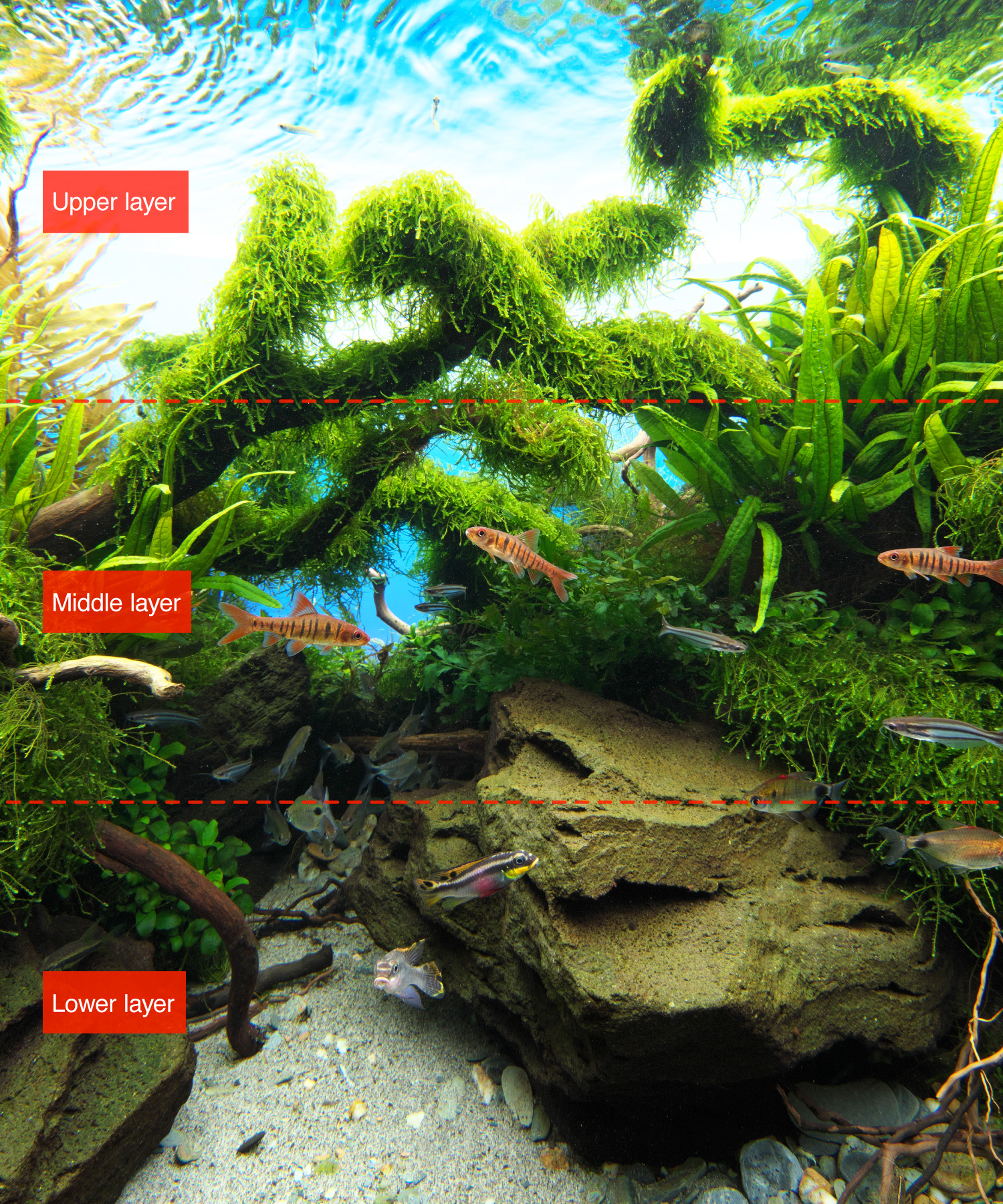
Upper layer: Aplocheilichthys normani
Middle layer: Alestopetersius smykalai, Barbus fasciolatus, Pareutropius buffei, Phenacogrammus altus, Phenacogrammus caudomaculatus
Lower layer: Pelvicachromis taeniatus ‘Nigeria Red’
Middle layer: Alestopetersius smykalai, Barbus fasciolatus, Pareutropius buffei, Phenacogrammus altus, Phenacogrammus caudomaculatus
Lower layer: Pelvicachromis taeniatus ‘Nigeria Red’
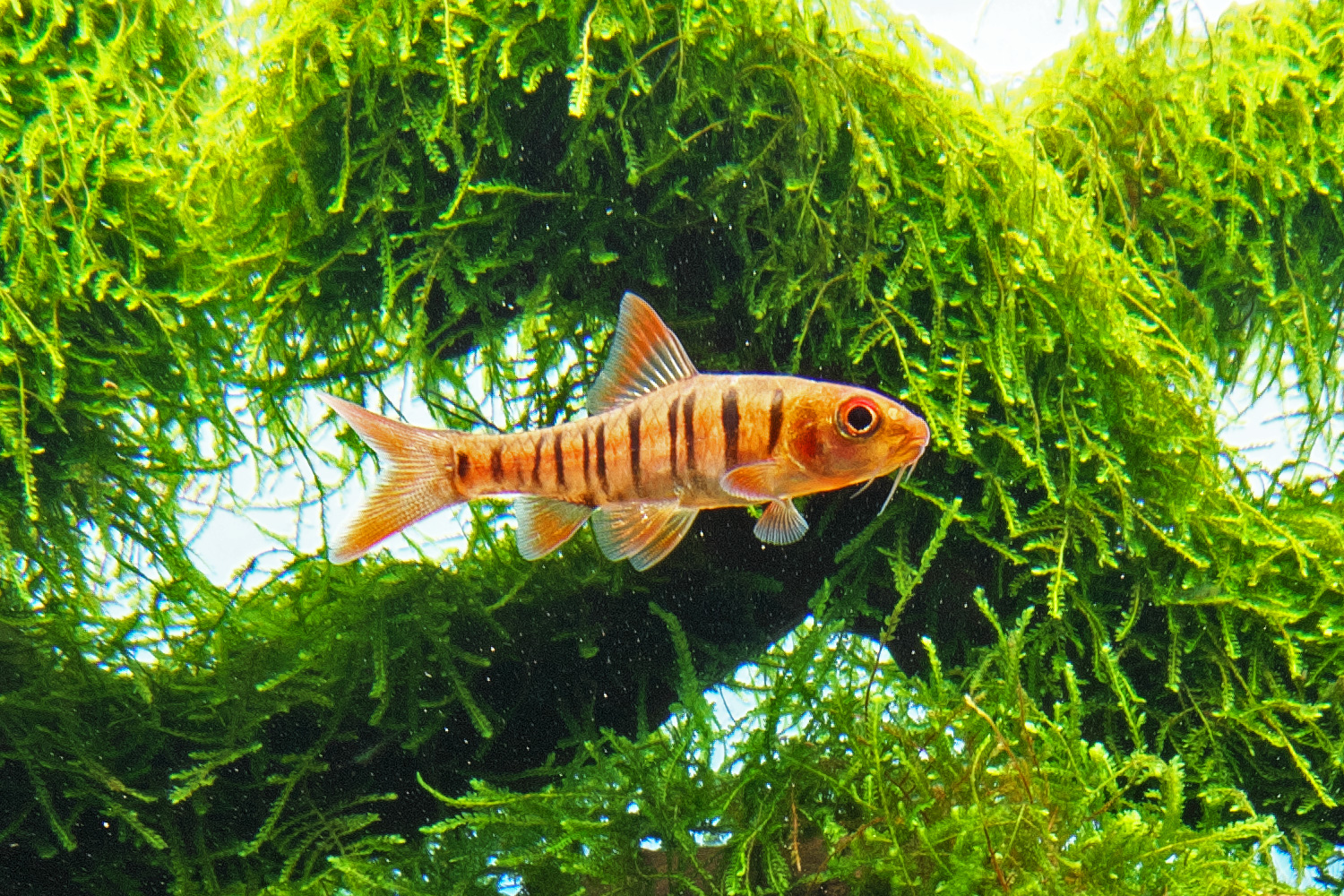
Barbus fasciolatus
With its warm, amber-colored body, Barbus fasciolatus blends beautifully into a layout filled with ferns. It’s a natural fit that contributes to a peaceful yet dynamic visual balance. To maintain its vivid color, feeding is key—AP Premium Series Food is especially effective for enhancing brightness. When kept in a group, they become even more eye-catching, even in larger tanks.
With its warm, amber-colored body, Barbus fasciolatus blends beautifully into a layout filled with ferns. It’s a natural fit that contributes to a peaceful yet dynamic visual balance. To maintain its vivid color, feeding is key—AP Premium Series Food is especially effective for enhancing brightness. When kept in a group, they become even more eye-catching, even in larger tanks.
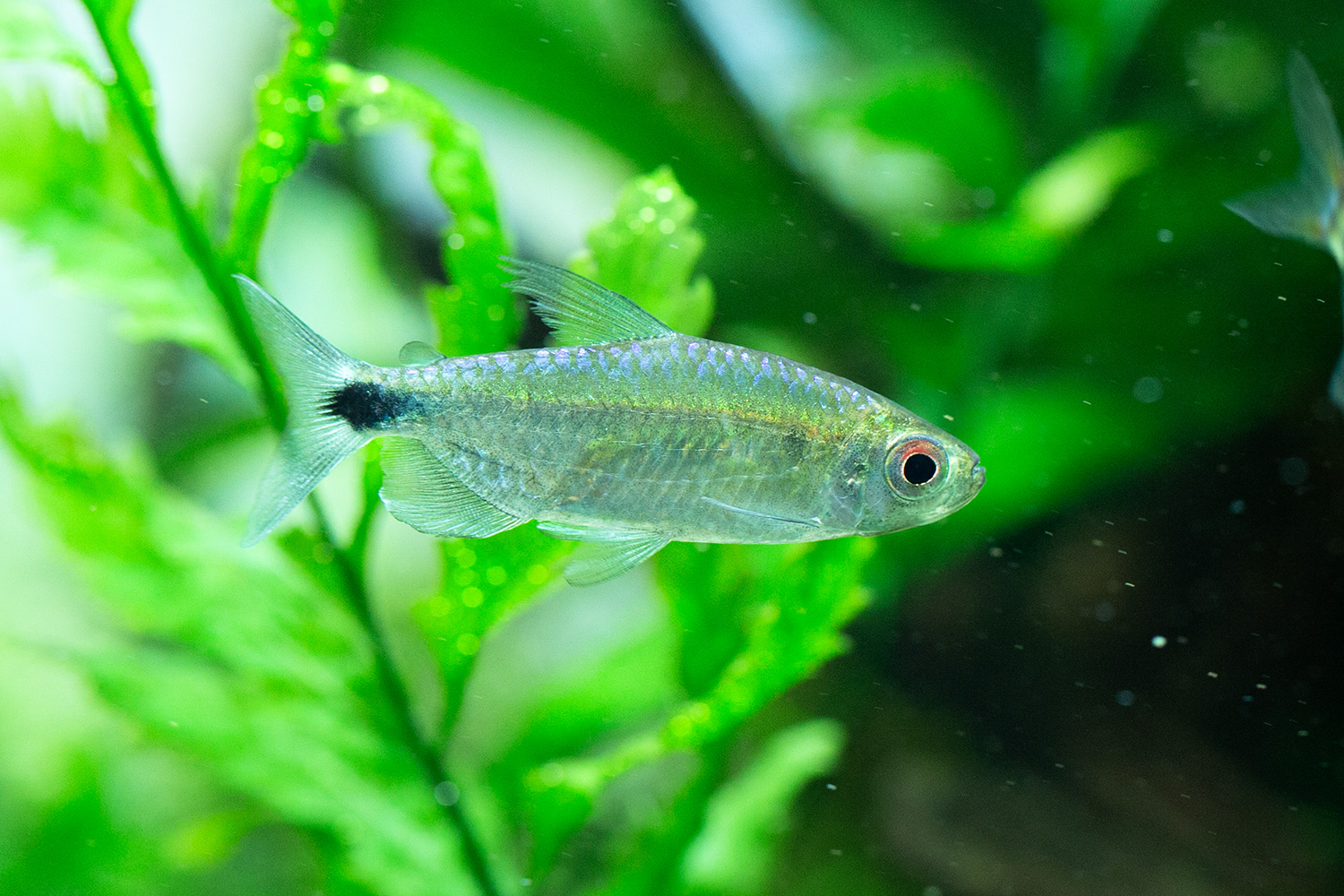
Alestopetersius smykalai
This species sparkles with a deep, metallic blue sheen that shifts toward sapphire. As they mature, their fins grow longer like flowing banners, adding elegance to their swim. In the early morning, you might even notice a reddish glow on the tips of their fins.
This species sparkles with a deep, metallic blue sheen that shifts toward sapphire. As they mature, their fins grow longer like flowing banners, adding elegance to their swim. In the early morning, you might even notice a reddish glow on the tips of their fins.
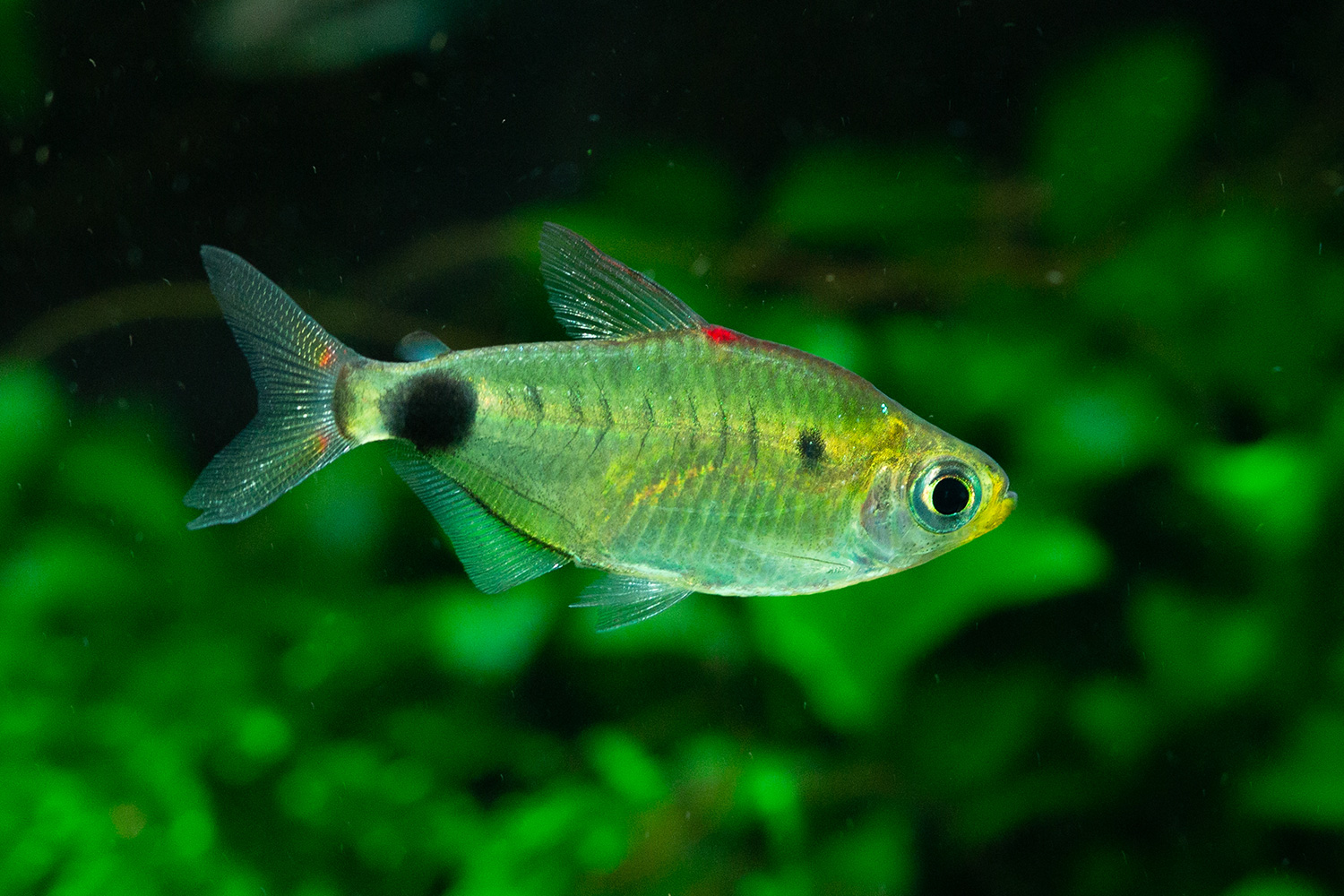
Phenacogrammus caudomaculatus
Their shimmering silver scales provide soft highlights even in low light, adding a calm yet luminous presence to the tank. As they grow, they reveal the subtle beauty unique to African characins. Their clear, glassy appearance also serves as a reliable indicator of their health.
Their shimmering silver scales provide soft highlights even in low light, adding a calm yet luminous presence to the tank. As they grow, they reveal the subtle beauty unique to African characins. Their clear, glassy appearance also serves as a reliable indicator of their health.

Phenacogrammus altus
This fish closely resembles Phenacogrammus caudomaculatus, but with slight variations in its patterns and body tone. Including similar fish from the same region creates a quiet harmony in a community tank—a detail that makes mixed-species aquascapes all the more intriguing.
This fish closely resembles Phenacogrammus caudomaculatus, but with slight variations in its patterns and body tone. Including similar fish from the same region creates a quiet harmony in a community tank—a detail that makes mixed-species aquascapes all the more intriguing.
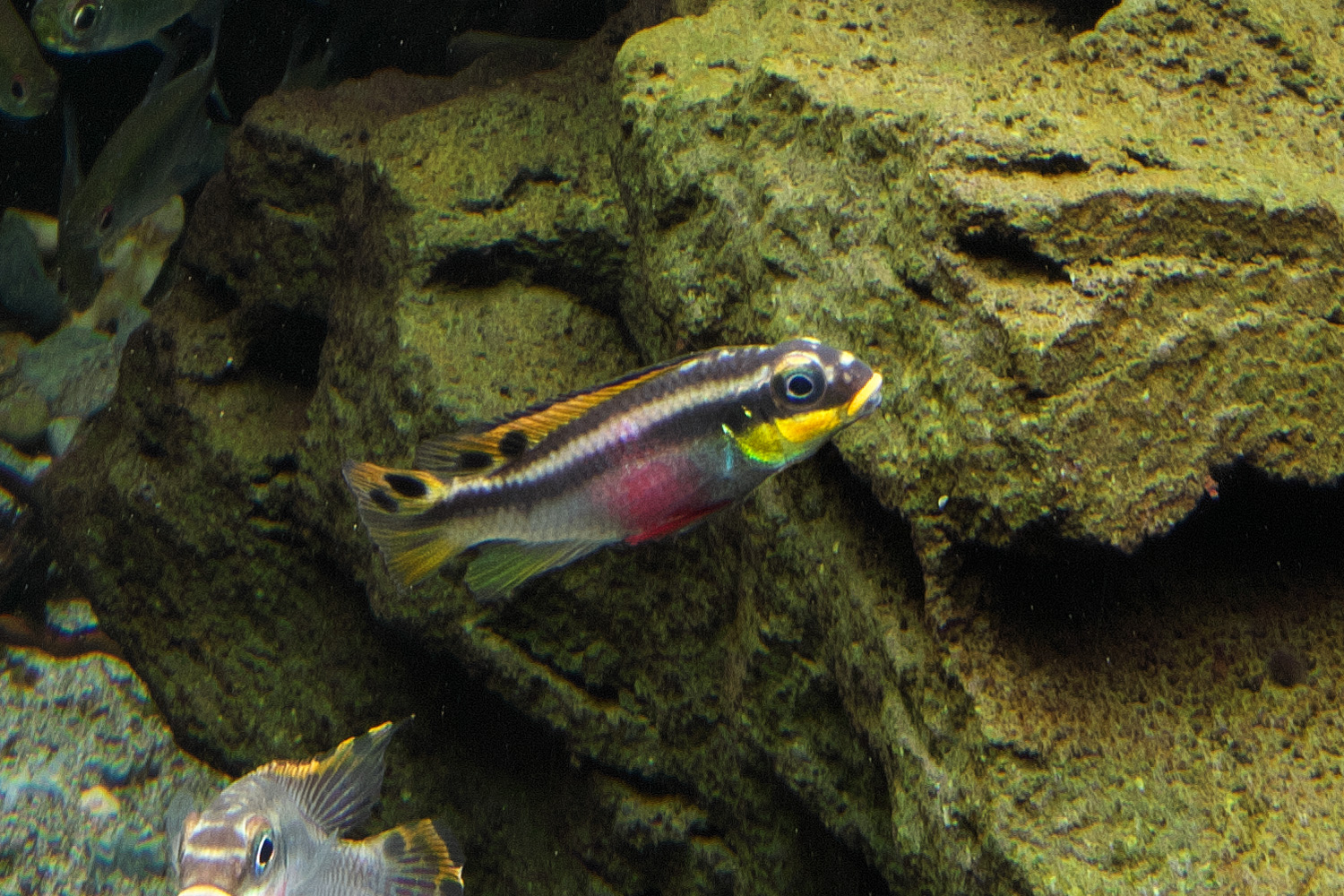
Pelvicachromis taeniatus ‘Nigeria Red’
This vibrant dwarf cichlid claimed a territory among the twisted root branches and began exhibiting nesting behavior. Its deep red belly stands out beautifully within the greenery, adding a bold visual accent. We also observed typical cichlid behaviors—like threatening gestures and digging in the substrate—suggesting they may be preparing to breed.
This vibrant dwarf cichlid claimed a territory among the twisted root branches and began exhibiting nesting behavior. Its deep red belly stands out beautifully within the greenery, adding a bold visual accent. We also observed typical cichlid behaviors—like threatening gestures and digging in the substrate—suggesting they may be preparing to breed.
Key Tips for Maintenance and Feeding

When mixing fish with different feeding speeds, special care must be taken to ensure all species get adequate nutrition. Surface dwellers often eat all the food before it reaches the bottom. In this tank, we use AP-2 Premium Food and let it flow into the tank’s current created by the Lily Pipe. This method distributes food evenly from top to bottom, allowing everything from lampeyes to cichlids to feed properly and thrive.
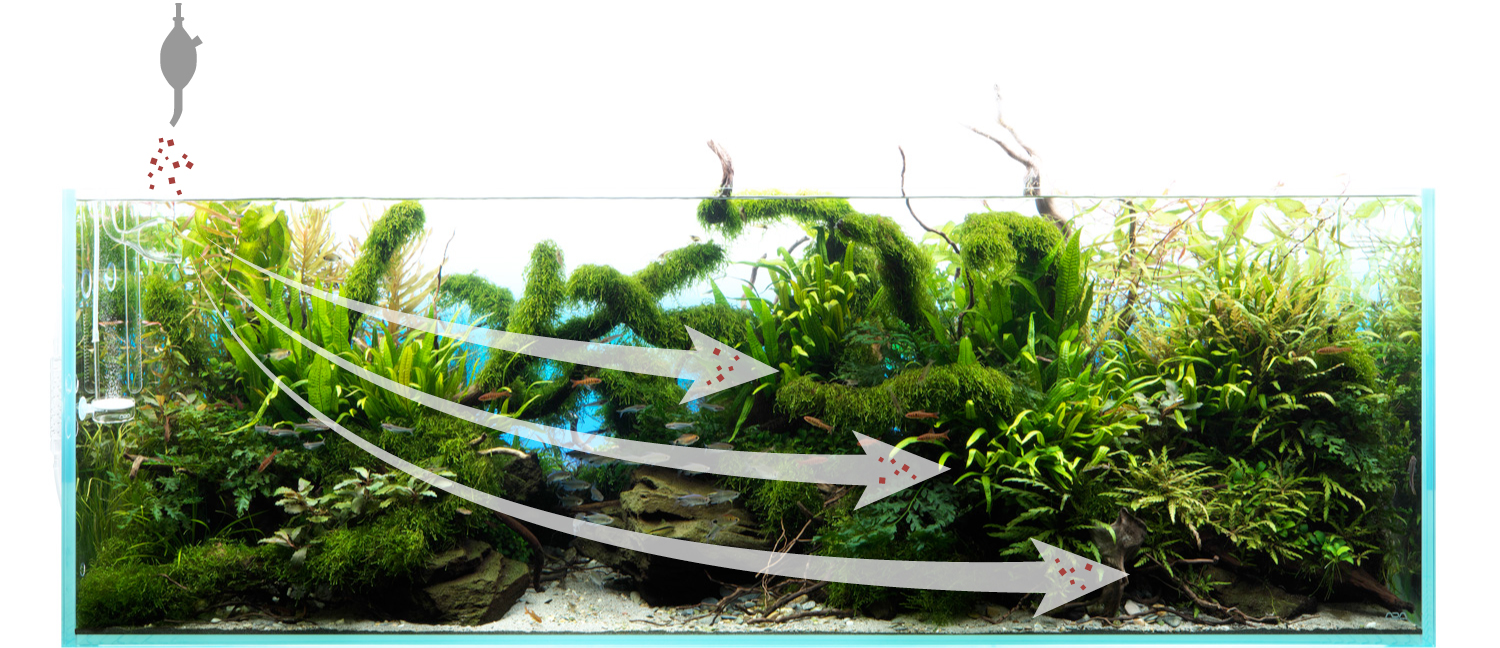
This aquarium will be on display at “NATURE AQUARIUM GALLERY / WELCOME DAY 2025”, held at the Nature Aquarium Gallery from Saturday, June 28 to Sunday, June 29, 2025.
If you’re visiting, be sure to check it out!
If you’re visiting, be sure to check it out!
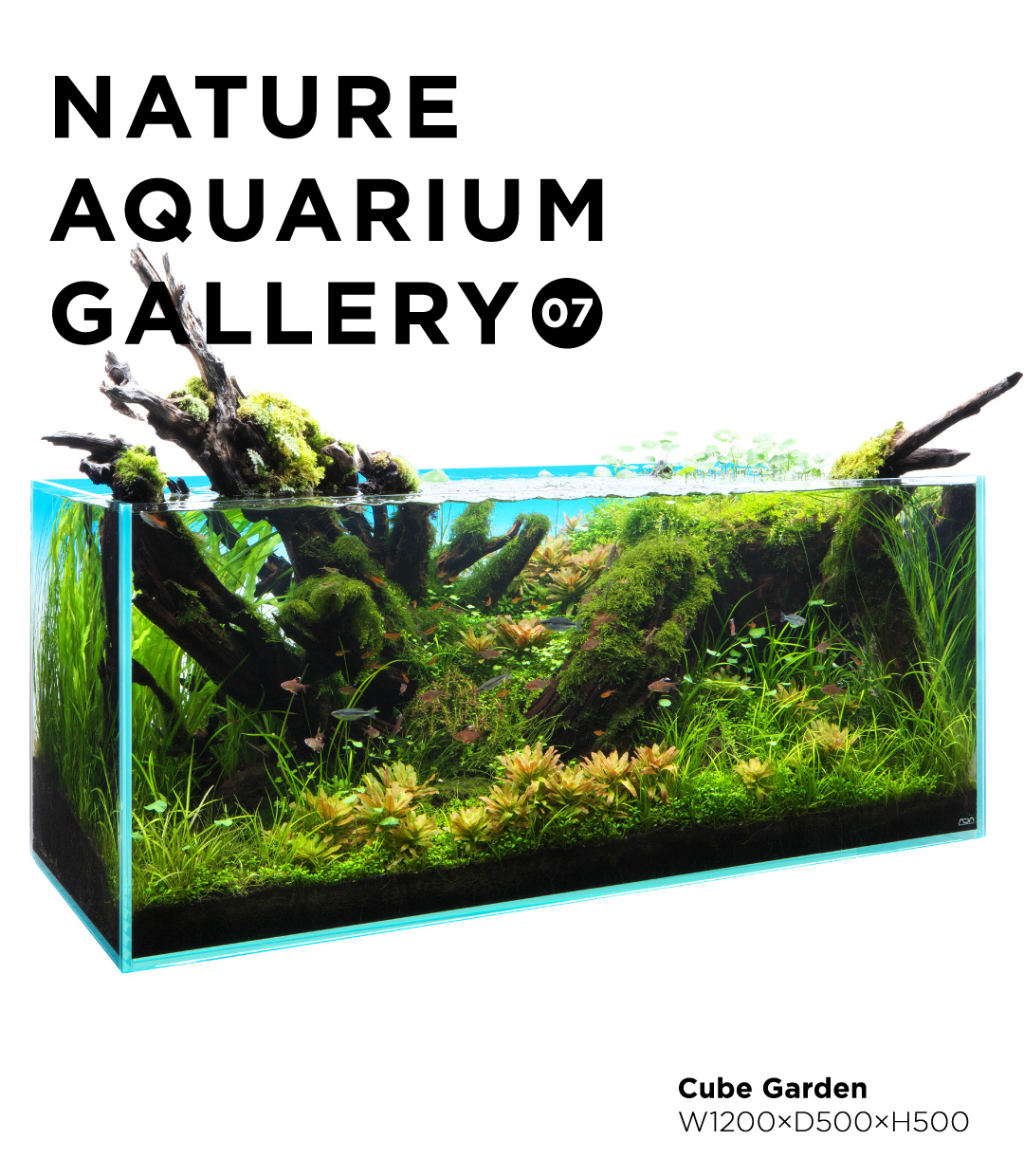
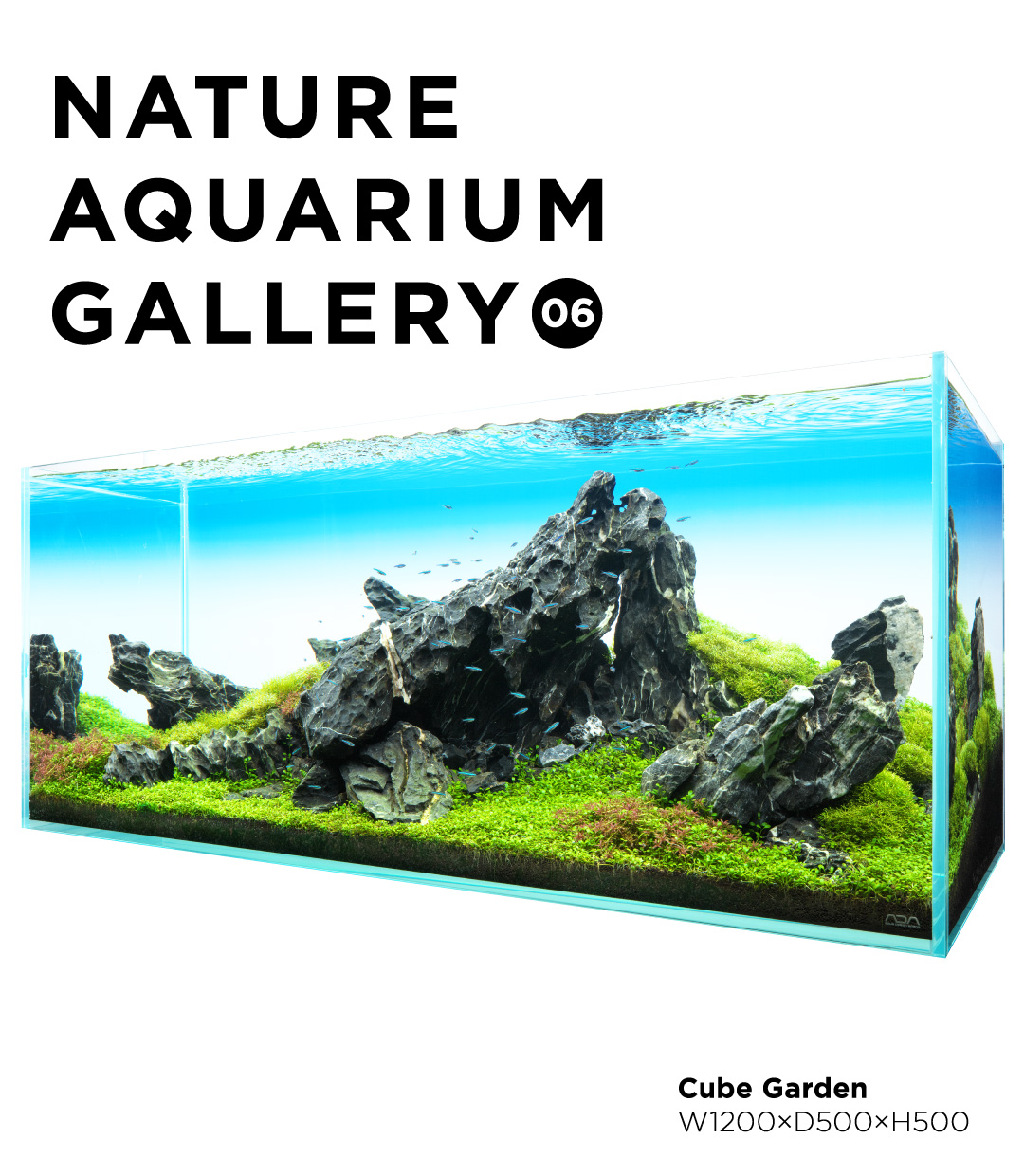
![Green Lab. #06 [ A Restful Waterside ]](https://www.adana.co.jp/wp-content/uploads/sites/3/2025/11/gl06_img_ogp.jpg)
